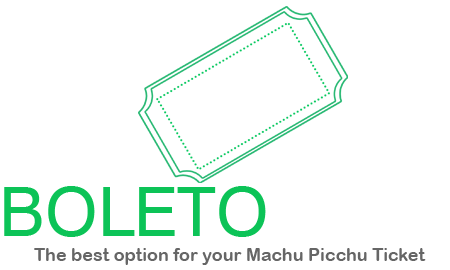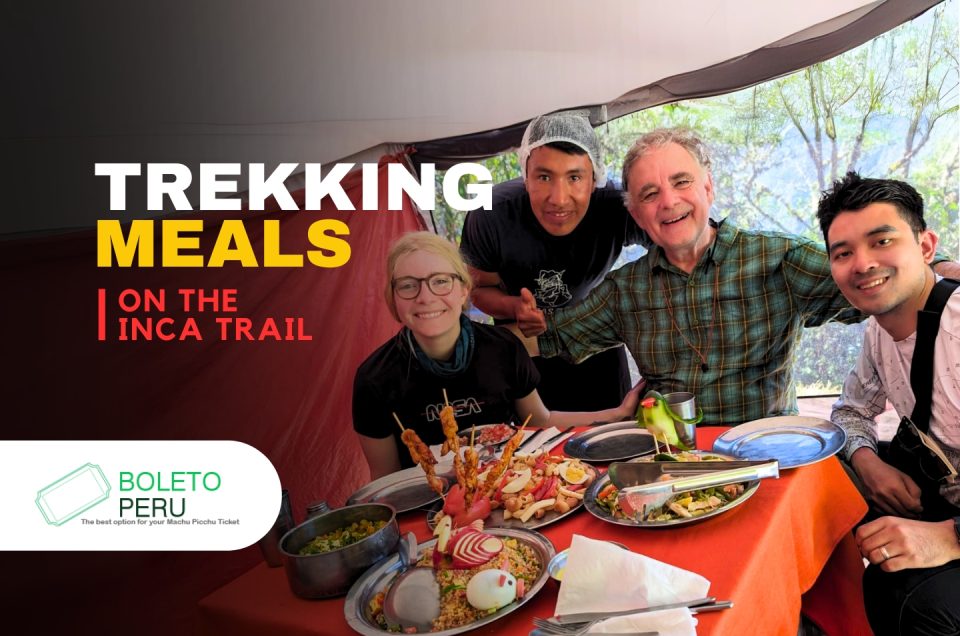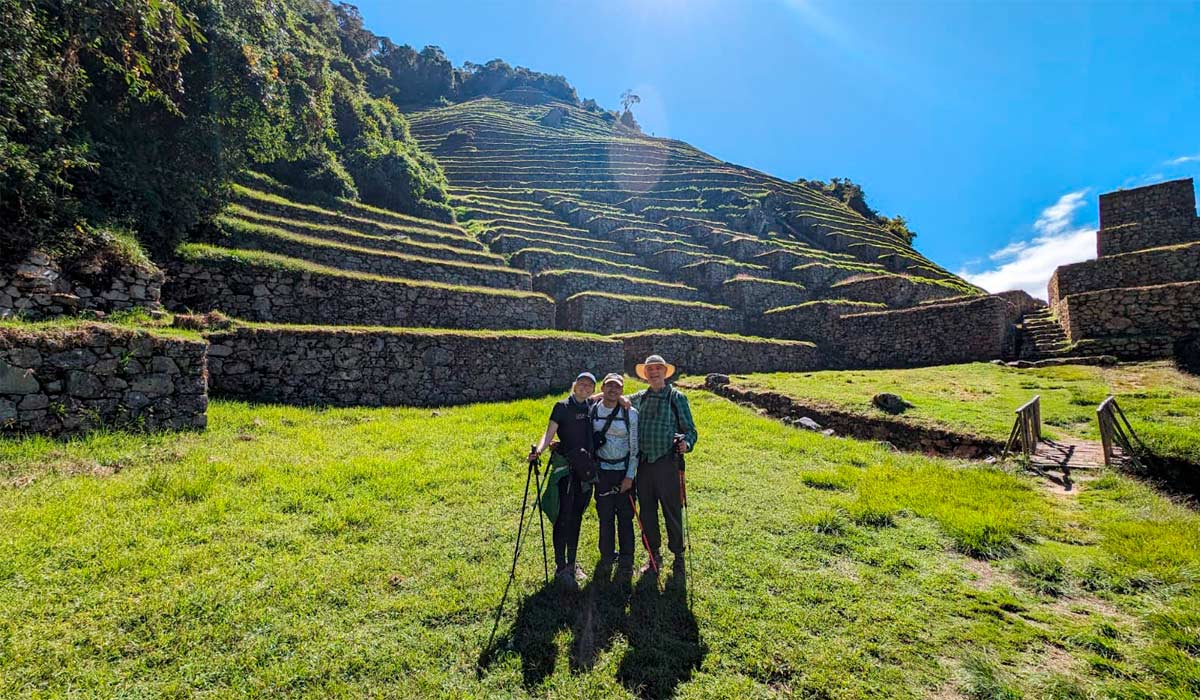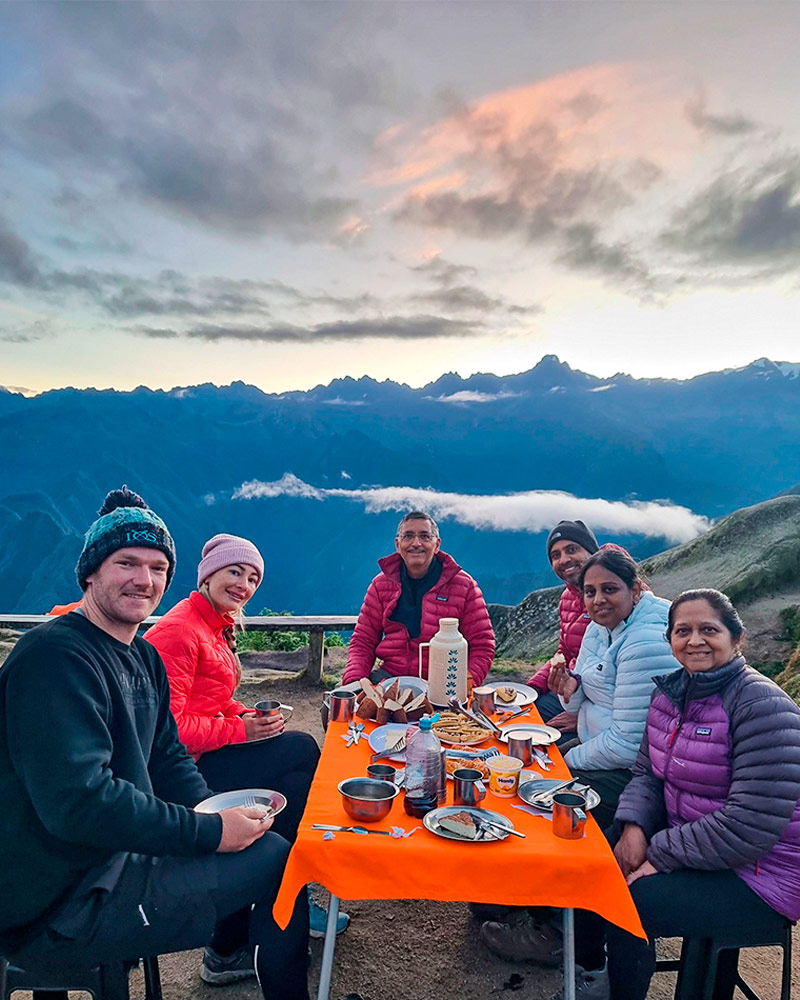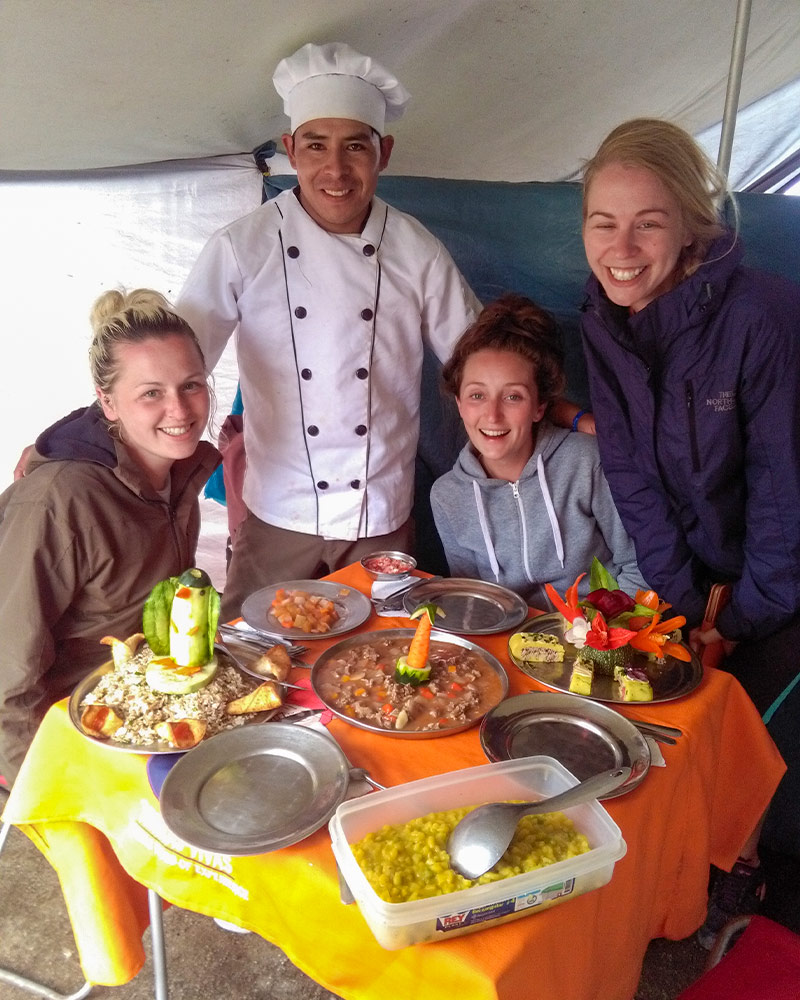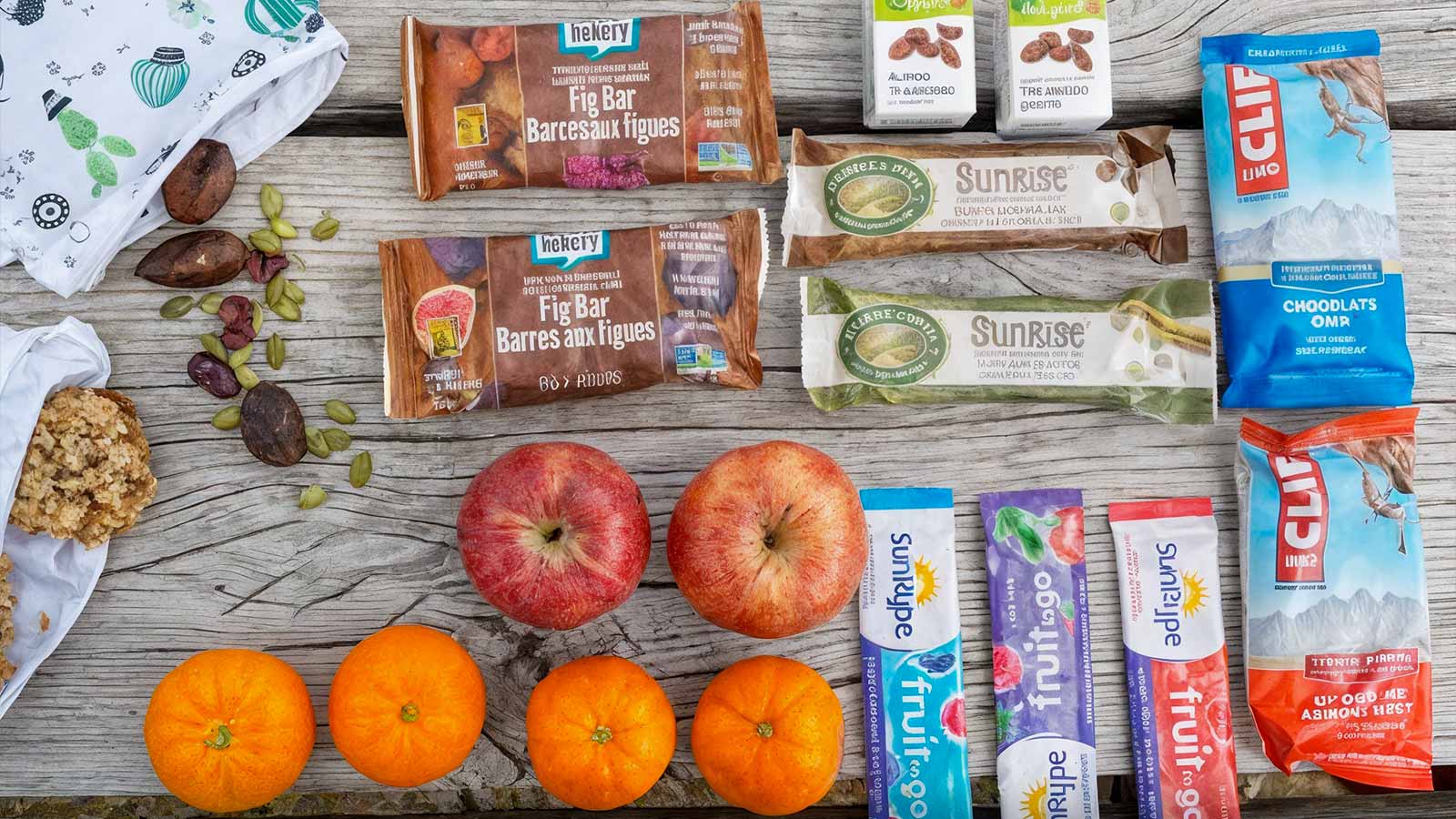The Inca Trail is one of the most famous hiking routes in the world, an old journey that leads to the holy city of Machu Picchu through beautiful views, old ruins, and mountain passes. But, beyond its history and spiritual value, this path also offers a food experience typical of the region, where trekking meals become very important.
During this hard trip, the body needs a constant supply of energy to handle long days of walking, changes in height, and different weather. For this reason, most special agencies include a full and carefully planned food service to meet the eating needs of travelers.
Peruvian cooking on the Inca Trail is not just something extra: it is part of the experience. From a warm breakfast at a campsite at sunrise, to a well-made dinner under the stars, the food goes with and supports travelers, leaving them with unforgettable memories and the tastes of Peru.
About the 4 Day Inca Trail
The Classic Inca Trail is the most well-known path to reach Machu Picchu. It takes four days and is about 43 kilometers long. It goes through a network of old paths built by the Incas, crossing mountains, valleys, high jungle, and several old sites that can only be visited on foot. Also, the route to Machu Picchu is split into four parts:
- The first day starts with an easy to medium walk from kilometer 82 to the camp in Wayllabamba, with country views and mild weather.
- The second day is thought to be the hardest, as you go up to the highest point of the path: Dead Woman’s Pass (Abra Warmiwañuska), more than 4,200 meters above sea level. This part is a real physical test because of the high place and the steep ground.
- The third day is longer in distance, but with a steady downhill walk. During this day, you pass through old sites like Phuyupatamarca and Intipata, and you camp near Wiñay Wayna.
- Finally, the fourth day starts very early with the entry to the Sun Gate (Inti Punku), from where you get the first wide view of Machu Picchu at sunrise.
Physical Difficulty of the Walk
This trip needs moderate to high physical readiness. The long walks, changes in how high you are, and the ground conditions need good physical shape, strength, and proper food. That’s why the food during this trip is not just to stop hunger, but it must give the energy needed to keep going and help the body recover. Every food eaten has a job: to make you strong, to hydrate, to bring you back to life. Cooking becomes a helper for your effort and a key part of feeling good during the four days of adventure.
Peruvian Food: The Core of Cooking on the Inca Trail
The food offered during the Inca Trail to Machu Picchu is based on Peru’s rich and varied cooking. This food is known all over the world for its many tastes, ingredients, and regional ways. This food history is changed to fit the needs of hiking, giving healthy and tasty dishes that show the country’s culture.
Among the most used ingredients are key foods from the Peruvian pantry: rice, quinoa, corn, potatoes, chicken or pork meats, beans, and many fresh fruits and vegetables. These foods are not only easy to carry and prepare, but they also give the needed energy to handle the physical demands of the trip. Also, traditional teas like coca leaf tea are included, which helps with the effects of high places.
The Role of Chili Pepper and Potato in the Food
There are 2 main stars in Peruvian cooking: the ají and the potato. Peruvian chili pepper, in its different kinds (like yellow chili pepper or rocoto), is used to add a special touch to many dishes. Its presence gives flavor, heat, and a very unique feel to the dishes served along the route.
The potato, on the other hand, is a real treasure of the region. With more than 2,000 kinds in Peru, the Andean potato stands out for its feel and how well it works in cooking. On the walking the inca trail, it is common to find it in many forms: boiled, in stews, as mashed potatoes, or with soups. This way, thanks to these native ingredients, travelers not only eat well, but also discover, step by step, an important part of Peruvian culture through taste.
Trekking Meals on the Inca Trail
Organizing the Trekking Meals on the Inca Trail is a plan that is carefully put together. Behind each meal served along the route is a team of skilled people who make sure the food arrives fresh and is prepared in hard conditions, while still offering good quality and taste.
One of the main parts of this work is the cooks, who know how to cook for trekking conditions and are used to working in outdoor camps. With them, the porters play a key role by carrying the food items, tools, portable stoves, tables, and tents.
Also, food is moved following strict rules for organization. Food items are chosen before the tour starts and are packed safely to stop harm or dirt during the trip. Fresh, non-spoiling products that are easy to keep in different climates are given first choice, without losing variety or quality.
Daily Menu on the Inca Trail
During the four days of the Inca Trail to Machu Picchu, meals will be a comforting routine that will go with you at every stage of the journey. From the first breakfast to the last dinner, the menus are planned to give the needed nutrients, also caring for taste and variety.
Breakfast
The day starts early at the camps, and breakfast is key to getting energy before starting the walk again. Usually, a mix of hot and light foods is offered, such as quinoa porridge or oatmeal, eggs cooked how you like, pancakes or omelets with ripe bananas. The traditional chuta bread, soft and sweet, typical of the Andean region, is also included.
Drinks are varied and aim to hydrate and give energy: coca tea, natural teas, coffee, and hot chocolate are usually available. These breakfasts help you face the first hours of effort with good spirits and strength.
Lunch
Lunch is served at midday, at key spots along the path where groups take a long break. The menus include a starter, main dish, and drink. Also, you should know that soups are common as a first dish (these include asparagus cream, quinoa, or mushroom soup) and they are served with more complete dishes like chicken salad, native potatoes with rice, spinach pie, or stuffed avocado.
Variety and good nutrition are always present. Fresh foods are favored, with light but enough meals to keep walking without feeling heavy. On the last day, lunch is enjoyed in the town of Aguas Calientes, with more choices at the local restaurants.
Dinner
Dinner is served when you get to the camp between 6:00 PM and 7:00 PM, after a hard day of walking. It is a full meal that can include dishes like stuffed chicken, pork chops, spaghetti, vegetable omelets, homemade pizza, and fresh salads. Hot soups or creams are also served to help the body recover from the cold of the night.
The last dinner on the Inca Trail walk is usually a special time. Some agencies set up a small party where a cake is shared, and cocktails or traditional drinks are offered. It is a chance to thank the support team and end the trip with a festive and thankful mood.
|
|
|
|
Special Diets and Food Customization
The organization of Inca Trail tours includes not only the general trip planning, but also looking after each traveler’s food needs. The tour companies are ready to offer special trekking meals, as long as you ask for them ahead of time.
Vegetarian and Vegan Options
Many people who hike the Inca Trail choose a vegetarian or vegan diet. Because of this, options without meat or animal products are offered. Cooks make dishes that include quinoa, stir-fried vegetables, bean-based soups, rice, pasta, and fresh fruits. These menus are designed to give enough energy, plant proteins, and nutrients throughout the whole hike.
For those who follow a strict vegan diet, it’s a good idea to send a list of foods not allowed ahead of time. This helps the cooking team plan better and avoid using products that don’t fit the traveler’s wishes.
Tips for People with Allergies or Food Limits
People with food allergies must clearly state this when booking the tour. Foods like gluten, nuts, seafood, or dairy can be avoided if you tell them in advance. While not all tours offer a kitchen 100% free of allergens, cooks usually take extra care to lower the risks.
It’s important to bring any emergency medicine with you (like antihistamines or epinephrine) and, if possible, personal snacks that you know are safe for you. Clear talking with the travel company and guide is key to having a safe and enjoyable time.
Snacks and Drinks for the Trail
During the long days of hiking, it’s important to stay hydrated and have extra sources of energy. Because of this, both the companies and the travelers themselves should plan for proper drinks and snacks.
- What is offered during the Inca Trail to Machu Picchu: At the camps, boiled water, teas like coca tea, and hot drinks are offered. Fresh fruits, cookies, and sometimes energy bars are also given out between meals. These snacks are made to give energy back without being too heavy or hard to digest.
- What you should bring extra: It’s a good idea to bring at least one extra liter of drinking water per day, either in bottles or a hydration system. It’s also helpful to bring personal snacks like nuts, cereal bars, chocolate, dried fruits, or crackers. These foods give quick energy and are easy to carry.
Tips to Best Enjoy Your Food Experience
Food on the Inca Trail Peru is not just a need; it is also part of enjoying the whole adventure. Trekking meals, carefully made for this hard route, give flavor and energy each day. With some care and good talking with your travel agency, you can be sure to have a tasty, safe, and energizing food experience.
What to Tell When Booking Your Tour
Before you start the trip, it’s very important to tell your agency about any special food needs you have: if you are vegetarian, vegan, if you have allergies or food limits, or if you follow a special diet for health. You should do this when you book, and it’s a good idea to check this information again a few days before the tour starts.
It’s also helpful to say what you like or don’t like in terms of tastes or foods, even if you don’t have allergies. This way, the cooks can make your meals better for you and avoid bad surprises during the trip.
Tips to Keep Your Energy During the Hike
The physical effort on the Inca Trail is big, so keeping a steady source of energy is key. It’s advised to:
- Eat a good breakfast each morning, including complex carbs, protein, and some fruit.
- Eat at every stop and don’t skip any meals, even if you don’t feel very hungry.
- Drink water or herbal teas often to stay hydrated.
- Use snacks between meals, especially during the hardest parts of the walk.
Avoiding very heavy or greasy foods will also help keep your digestion easy and comfortable during the walks.
How to Change Your Eating for High Places and Physical Effort
High places can affect your hunger and stomach, so it’s good to eat small amounts often, several times a day. Light meals, rich in carbs, and easy to digest, like soups, rice, potatoes, quinoa, and fruits, help keep your body balanced.
Also, coca tea is a traditional drink that helps with symptoms of altitude sickness. You can also talk to your doctor if you want to bring pills to stop soroche (altitude sickness), but eating well with these is very important to keep your body in good shape.
In the end, a well-planned food experience on the Inca Trail not only brings joy but also directly helps your body and feelings throughout the whole trip.
